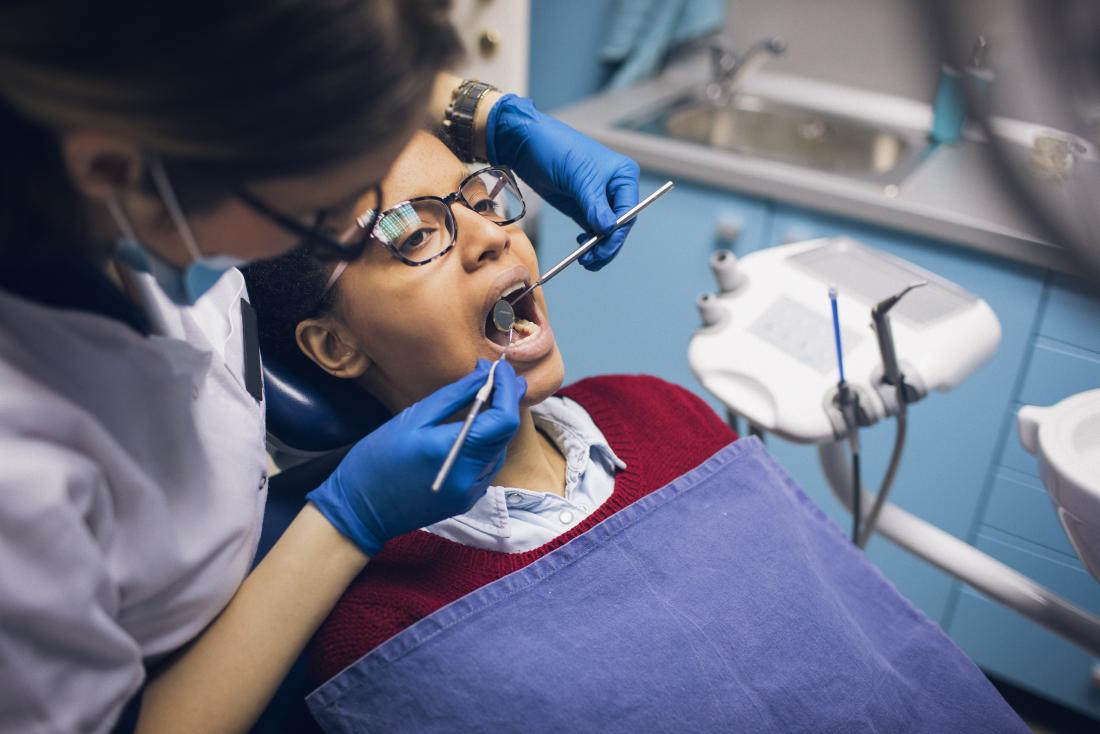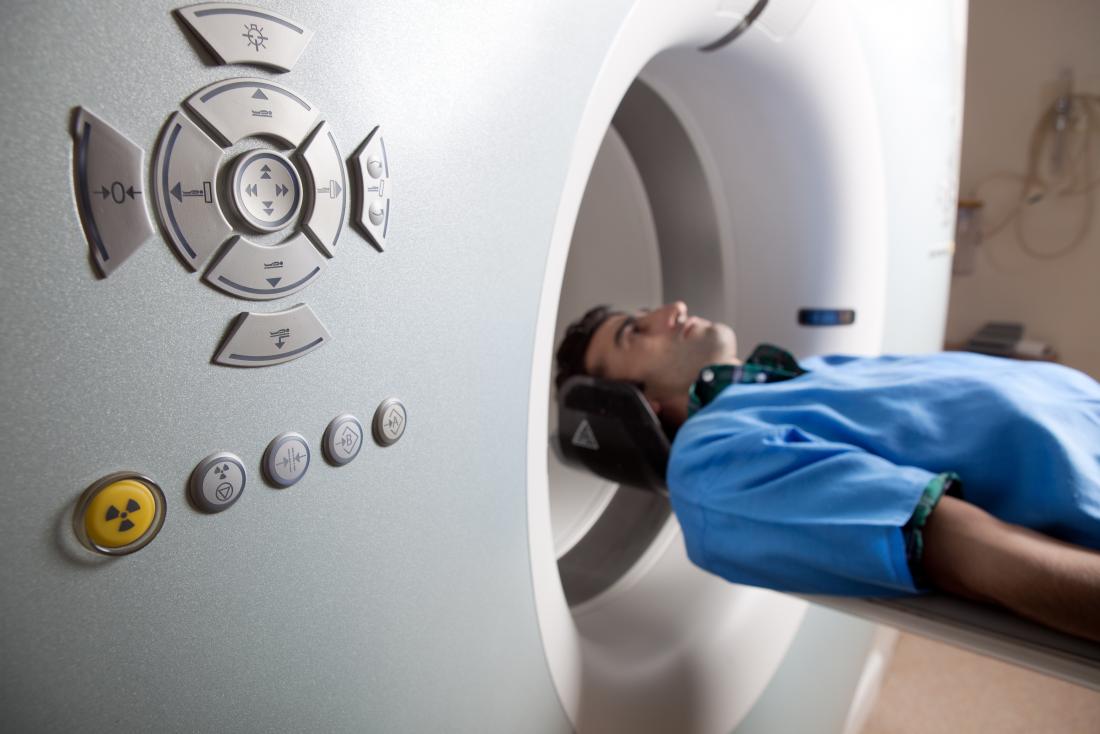Facial pain can originate from a specific area of the face, or it may radiate from another part of the head.
Doctors often categorize facial pain into one of several types, including:
- dental pain, which relates to problems with the teeth and gums
- nerve pain, or neuralgia, which relates to conditions that affect the facial nerves
- temporomandibular pain, which relates to the temporomandibular joint (TMJ) and the muscles of the jaw
- vascular pain, which occurs due to issues with blood vessels and blood flow
In this article, we explore some common causes of facial pain. We also discuss when to see a doctor, diagnosis, and self-care.
Headaches

Different types of headache can cause facial pain.
There are many different types of headache, a number of which can also cause facial pain. Some of these headaches include:
- Ice pick headaches cause a sharp, stabbing pain. These bouts of intense pain typically last for around 3 seconds and can affect the temples, eye sockets, and sides of the head.
- Cluster headaches usually occur very suddenly and can be extremely painful. They cause a burning pain around the eyes and temples that sometimes radiates toward the back of the head. Other symptoms can include a runny nose and red, swollen eyes.
- Migraine headaches are sudden and severe and may only affect one part of the head. Around one-third of people with migraine also experience an aura before the physical pain starts. As well as visual and sensory disturbances, an aura can also cause tingling and numbness on one side of the face, body, or both.
People who experience recurring headaches should consider seeing a doctor. Treatment varies depending on the type of headache but can include making suitable lifestyle changes and taking certain medications to prevent painful episodes and reduce symptoms.
Injuries
Facial pain can often relate to current or past injuries, particularly those that damage the nerves in the face.
Examples of facial injuries can include cuts and blows from falls, impacts, violence, and accidents.
Rarely, surgery to the face, such as from cosmetic procedures, can cause nerve damage that leads to facial pain.
Symptoms of injuries to facial nerves can also include tingling, numbness, and even paralysis in or around the affected area.
TMJ disorders
The TMJ is where the jawbone, or mandible, connects to the skull. There are two TMJs, one on each side of the head.
“TMJ disorders” is the general term for conditions that cause pain and movement problems in the jaw joint and muscles.
According to the National Institute of Dental and Craniofacial Research, some estimates suggest that more than 10 million people in the United States have a TMJ disorder.
Symptoms of a TMJ disorder can include:
- jaw pain that may radiate to the face, head, or neck
- stiffness in the jaw muscles
- difficulty opening and closing the mouth, which can include jaw locking
- an uncomfortable clicking, popping, or grinding when moving the jaw
A person may find that the pain is worse while chewing. The jaw might also feel tender at the joint, even when it is not moving.
Treatments for TMJ disorders depend on the severity of a person’s symptoms, but they can include:
- taking over-the-counter (OTC) and prescription pain relievers
- trying stress reduction techniques
- wearing a mouth splint or bite guard
- undergoing surgery to correct jaw alignment
Trigeminal neuralgia
Trigeminal neuralgia, or tic douloureux, is a chronic pain disorder that affects the trigeminal nerve in the face. This nerve has three main branches that provide sensations to the scalp, forehead, cheeks, lips, and lower jaw.
Trigeminal neuralgia usually affects only one side of the face, but some people can experience pain on both sides.
The pain tends to come on suddenly and can range in nature from a constant aching or burning sensation to a severe stabbing pain. Performing certain movements or actions, such as eating, brushing the teeth, and applying makeup, can trigger a painful episode, as can having the wind blow on the face.
These episodes may sometimes last for days or even weeks. They can become more frequent and more intense over time.
Causes of trigeminal neuralgia can include:
- compression or pressure on the trigeminal nerve
- nerve damage from injuries, stroke, or facial surgery
- underlying medical conditions, such as multiple sclerosis
Treatments options for trigeminal neuralgia include:
- avoiding known triggers
- taking prescription medications, such as anticonvulsants, antidepressants, and botulinum toxin (Botox) injections
- undergoing surgery
Dental abscess

A dentist can help diagnose and treat a dental abscess.
A dental abscess is a buildup of pus that can develop when bacteria infect the soft tissue of a tooth.
These infections can occur when tooth decay or injuries that damage teeth allow bacteria to get inside the tooth.
Abscesses can cause a throbbing pain that may radiate to jaw, face, and neck. Other symptoms can include:
- fever
- tender, swollen, and red gums
- loose teeth
- swelling in the face
- an unpleasant smell or taste in the mouth
People who have symptoms of an abscess should see a healthcare professional as soon as they can. Abscesses can lead to more serious infections that spread to the jaw and other parts of the mouth.
Treatment options for an abscess depend on the cause and severity of the infection but can include:
- taking antibiotics to kill the bacteria
- having a professional drain the abscess
- seeking tooth extraction or root canal treatment
Sinusitis
Sinusitis occurs when the sinuses become inflamed. The sinuses are the small cavities that sit behind the nose, cheekbones, and forehead.
Sinusitis usually starts following a cold, but nasal allergies such as hay fever can also cause the sinuses to become inflamed.
The inflammation inside the sinuses can cause blockages that lead to a buildup of mucus. Other symptoms of sinusitis can include:
- pain, pressure, and tenderness in the face, particularly around the nose, cheeks, and forehead
- a stuffy or blocked nose
- green or yellow mucus coming from the nose
- a reduced sense of smell
- facial pain and pressure, especially around the nose and eyes
Sinusitis often clears up on its own without treatment. However, people whose symptoms last for at least 12 weeks may have chronic sinusitis.
Treatment options include taking OTC pain relievers, using steroid nasal sprays, and trying salt water irrigations.
Although sinusitis is most often due to a viral infection, a doctor may sometimes prescribe antibiotics if symptoms last 10 or more days or if they worsen. At this point, the doctor may suspect a bacterial infection.
When a person has chronic sinusitis, a doctor may recommend surgery to open the sinus passages and facilitate drainage.
Sialadenitis
Sialadenitis is a rare condition in which the salivary gland in the mouth becomes infected and swollen. The infection typically affects the parotid gland in front of the ear or the submandibular gland beneath the chin.
Sialadenitis can cause pain on one side of the mouth or face, near the infected gland. Other symptoms can include:
- fever and chills
- pus that drains into the mouth
- skin flushing near the infected gland
- swelling on one side of the face
People with persistent mouth dryness or a blocked salivary gland are more likely to develop sialadenitis. However, there is not always an obvious cause.
A doctor may prescribe antibiotics to people with a bacterial infection. They may also recommend drinking plenty of fluids and consuming foods and drinks that stimulate saliva production, such as hard, sour candies and lemon juice.
When to see a doctor
People with severe, worsening, or persistent facial pain should speak to a doctor. Also, seek medical attention for symptoms that may indicate an infection, such as:
- fever
- redness or flushing
- severe facial or dental pain
- swelling
- unexplained fatigue
Diagnosis

A doctor may recommend an MRI scan to help diagnose the cause of facial pain.
To diagnose facial pain, a doctor will usually begin by asking a person about their symptoms and medical history.
They may also conduct a physical examination.
To aid their diagnosis, the doctor may order imaging tests such as CT scans, MRI scans, or an X-ray.
They may also perform nerve conduction studies to determine how well the nerves in a person’s face are working.
Self-care
People can usually treat mild facial pain at home. The effectiveness of self-care treatments depends on the underlying cause, but some suggestions include:
- wrapping an ice pack in a cloth or towel and applying it to the affected area for 10–20 minutes several times per day
- taking OTC medication such as ibuprofen, naproxen, or acetaminophen to relieve pain
- keeping the head elevated to promote mucus and fluid drainage from the face to relieve discomfort from sinusitis
- gargling with salt water three times per day to help relieve dental pain
Some people may also find complementary therapies such as acupuncture, chiropractic treatment, and biofeedback beneficial for facial pain.
Summary
Facial pain may often relate to headaches and injuries. However, other causes include dental problems, infections, and nerve disorders.
People with severe, recurring, or persistent facial pain should see a doctor, who will be able to help determine the underlying cause and recommend possible treatments.
Let’s block ads! (Why?)





